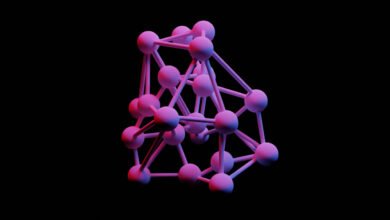
In the rapidly evolving landscape of technology, crafting a robust IoT strategy is imperative for sustained success. As businesses and individuals increasingly embrace the Internet of Things (IoT), the need for a well-thought-out approach becomes paramount. In this article, we will delve into the essential aspects of creating a resilient IoT strategy that stands the test of time. From understanding the fundamental components of IoT to addressing the challenges that come with its implementation, we’ll explore key insights and provide actionable tips for ensuring long-term success in your IoT endeavors.
The Internet of Things, or IoT, refers to the interconnected web of devices that communicate and share data seamlessly. From smart homes to industrial applications, the influence of IoT is pervasive. However, the true potential of IoT can only be harnessed with a strategic approach that anticipates challenges and leverages opportunities. Whether you’re a business looking to optimize operations or an individual seeking to make the most of smart technologies, this article will guide you through the intricacies of creating a robust IoT strategy, emphasizing the importance of foresight and adaptability in navigating the dynamic IoT landscape.
Table of Contents
ToggleCreating a Robust IoT Strategy: Tips for Long-Term Success
Definition of IoT
The Internet of Things refers to the network of interconnected devices that can communicate and share data. These devices, equipped with sensors and actuators, range from everyday objects to industrial machines.
Importance of a Robust IoT Strategy
While the concept of IoT is exciting, implementing it without a well-thought-out strategy can lead to inefficiencies and security risks. A robust strategy ensures the seamless integration of IoT devices into existing systems and sets the foundation for long-term success.
Understanding the Basics of IoT
Components of IoT
IoT comprises three main components: sensors, connectivity, and data processing. These components work together to collect, transmit, and analyze data.
How IoT Devices Communicate
IoT devices communicate through various protocols such as MQTT and CoAP. Understanding these communication methods is crucial for optimizing data flow and ensuring efficiency.
Challenges in IoT Implementation
Security Concerns
One of the primary challenges in IoT is ensuring the security of data. With the vast amount of sensitive information generated by IoT devices, robust security measures are non-negotiable.
Interoperability Issues
The compatibility of different IoT devices and systems is a common challenge. A comprehensive strategy addresses interoperability concerns to create a seamless network.
The Need for a Comprehensive IoT Strategy
Scalability
A scalable IoT strategy accommodates the growing number of devices without compromising performance. Scalability ensures that the system can adapt to the increasing demands of a connected environment.
Integration with Existing Systems
An effective IoT strategy integrates seamlessly with existing systems, preventing disruptions and enhancing overall efficiency.
Key Components of a Robust IoT Strategy
Data Security Measures
Prioritizing data security involves encryption, authentication, and regular security audits. A secure IoT system builds trust among users and stakeholders.
Scalable Infrastructure
Investing in a scalable infrastructure ensures that the IoT network can handle a large volume of data and devices, accommodating future growth.
Choosing the Right IoT Devices
Compatibility with the Strategy
Selecting devices aligned with your IoT strategy prevents integration issues and ensures that each device contributes to the overall objectives.
Reliability and Performance
Opt for reliable devices with proven performance. Dependable IoT devices contribute to the stability and efficiency of the entire network.
Implementing IoT Analytics
Importance of Data Analytics
Data analytics extracts valuable insights from the vast amount of data generated by IoT devices. Implementing analytics tools enhances decision-making processes.
Real-Time Monitoring
Real-time monitoring allows quick response to anomalies, improving system performance and minimizing downtime.
Future-Proofing Your IoT Strategy
Adapting to Technological Advancements
A future-proof IoT strategy embraces technological advancements, ensuring relevance and competitiveness in a rapidly evolving landscape.
Regular Updates and Maintenance
Continuous updates and maintenance prevent vulnerabilities and enhance the longevity of the IoT infrastructure.
Case Studies of Successful IoT Implementations
Industry-Specific Examples
Exploring successful IoT implementations across industries provides valuable insights and practical lessons for creating a robust strategy.
Key Takeaways from Each Case
Analyzing key takeaways helps in understanding the factors contributing to the success of different IoT implementations.
Common Mistakes to Avoid in IoT Strategy
Lack of Scalability
Ignoring scalability leads to performance issues and limits the potential growth of the IoT network.
Ignoring Security Measures
Neglecting security measures exposes the IoT system to data breaches and compromises user trust.
Measuring the Success of Your IoT Strategy
Key Performance Indicators (KPIs)
Establishing measurable KPIs allows for the assessment of the IoT strategy’s success and identifies areas for improvement.
Continuous Improvement
A successful IoT strategy is dynamic, incorporating feedback and continuously evolving to meet changing requirements.
Incorporating Sustainability in IoT
Energy-Efficient Devices
Choosing energy-efficient IoT devices aligns with sustainability goals and reduces the environmental impact of the network.
Reducing Environmental Impact
Implementing practices to minimize the environmental footprint of IoT operations contributes to sustainable development.
Challenges in the Evolving IoT Landscape
5G Integration
The integration of 5G technology presents both opportunities and challenges. Understanding its implications is crucial for future IoT success.
Artificial Intelligence in IoT
Artificial Intelligence (AI) and the Internet of Things (IoT) are two transformative technologies that, when combined, create a synergy that opens new frontiers of innovation and efficiency. The integration of AI in IoT systems enhances the capabilities of connected devices, making them smarter, more responsive, and capable of making intelligent decisions. In this article, we will explore the profound impact of Artificial Intelligence in the realm of IoT, examining its applications, benefits, and the challenges that come with this powerful amalgamation.
Understanding the Role of AI in IoT
At its core, the integration of AI in IoT involves imbuing connected devices with the ability to analyze, interpret, and respond to data in real-time. AI algorithms process the vast streams of data generated by IoT devices, extracting meaningful insights and facilitating informed decision-making. This empowers IoT systems to not only collect data but to understand patterns, predict outcomes, and adapt to changing circumstances autonomously.
Applications of AI in IoT
The marriage of AI and IoT is reshaping industries and daily life in unprecedented ways. In healthcare, for example, AI-powered IoT devices can monitor patient vitals in real-time, predict health issues, and provide timely interventions. Smart cities leverage AI in IoT for efficient traffic management, energy consumption optimization, and public safety enhancements. Industries benefit from predictive maintenance in manufacturing, where AI analyzes data from IoT sensors to foresee equipment failures before they occur, minimizing downtime.
Read More: From Sensor to Cloud: A Guide to IoT Data Transmission In 2024
Conclusion
In the ever-evolving realm of technology, the importance of creating a robust IoT strategy cannot be overstated. As we conclude our exploration into the intricacies of forging a successful Internet of Things (IoT) approach, it becomes evident that the key to long-term success lies in a combination of foresight, adaptability, and a commitment to addressing challenges head-on.A resilient IoT strategy is not a one-time implementation but an ongoing process that requires continuous refinement and adaptation. As technologies advance and the IoT landscape evolves, businesses and individuals must stay agile to harness the full potential of interconnected devices.
The ability to scale operations, integrate seamlessly with existing systems, and prioritize data security are fundamental pillars of a successful IoT strategy.It’s crucial to highlight that the journey toward IoT success is marked by a commitment to continuous improvement. Embracing technological advancements, learning from both successes and failures, and staying attuned to the needs of an ever-connected world will ensure that your IoT strategy remains not just robust but also future-proof. As you embark on your IoT endeavors, remember that success lies not only in the devices you connect but in the strategic foresight and adaptability that guide their integration.
FAQs : Robust IoT Strategy
Is it necessary to implement IoT analytics in every strategy?
While not mandatory, IoT analytics enhance the value of data generated by devices, providing valuable insights for decision-making.
How can I ensure the scalability of my IoT strategy?
Choose a scalable infrastructure and devices, and plan for future growth in terms of data volume and device numbers.
What role does data privacy play in IoT?
Data privacy is crucial in IoT to protect sensitive information, comply with regulations, and build trust among users.
Why is future-proofing important in IoT?
Future-proofing ensures that your IoT strategy remains relevant and adaptable to emerging technologies.
How can businesses measure the success of their IoT strategy?
Key performance indicators (KPIs) help businesses evaluate the effectiveness of their IoT strategy and identify areas for improvement.











